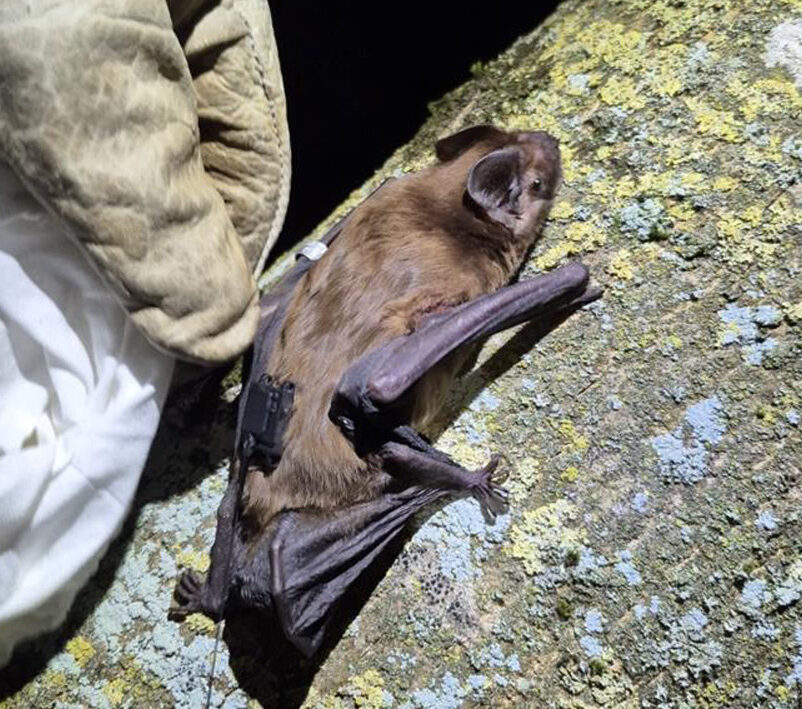The program, carried out by technicians from the Forest Science and Technology Center of Catalonia, is under the umbrella of a large European project on migratory bats coordinated by the Max Planck Institute of Animal Behavior in Germany, with the collaboration of other institutions and experts.
MIGRABAT aims to learn about the movements of migratory forest bats and, particularly, of the most endangered species, such as the greater noctule (Nyctalus lasiopterus), the largest bat in Europe, and the common noctule (Nyctalus noctula).
Catalonia has a new project to protect threatened and vulnerable species of bats. MIGRABAT is a new line of work within the Endesabats project, which consists of the marking and monitoring of small, medium, and large bats in Catalonia and Aragon. Noctules are species of migratory forest bats, bioindicators of the health of the ecosystem. Thanks to new transmitting technologies, it is possible to start tagging bats to obtain data for over thirty days. The aim is to gather information on the movements of the most endangered species, such as the greater noctule (Nyctalus lasiopterus), the largest bat in Europe, the common noctule (Nyctalus noctula), and the lesser noctule (Nyctalus leisleri).
The initiative is being carried out by technicians from the Forest Science and Technology Center of Catalonia (CTFC). In recent weeks researchers have been placing radio transmitters on fourteen small nuthatch females and nine giant nuthatch females, since females are the ones that migrate, while males remain in Catalonia. The tagging has been done near Solsona and in the Jordà Beech Forest, within the Natural Park of the Volcanic Zone of La Garrotxa. These transmitters — which are attached to the fur on the animal’s back — will provide information on the movements of the individuals during the months of April and May, to better understand their migratory routes to breeding locations and their spatial and ecological needs. The plan is to repeat this process during different times of the year, as was already done in summer and autumn last year. The information obtained will make it possible to assess the importance of the mating areas, and it is planned to do the same for the wintering areas in subsequent years.
This action is part of a European project coordinated by the Max Planck Institute of Animal Behavior, from Germany, which provides the transmitting technology, and supervises the results. This new international project brings together a large number of institutions from different countries. This joint international effort will create a map of migratory routes of bats at a European scale, highly valuable and under-researched information for the conservation of this group of species.
Twelve years of the Endesabats project
In 2013, Endesa launched the Endesabats project together with the CTFC, following the discovery of some colonies of bats in the galleries of the hydroelectric power plants of Huérfanos (in Alt Empordà), and Camarasa (Noguera). The conditions of light, humidity and climatology that are provided by hydroelectric power plants and their auxiliary infrastructures make them ideal natural refuges for bats, a group of species that is quite endangered in our country and of a very high value for the ecosystem. Since 2013, the project has already reached a total of fifty locations in different parts of Spain: Andalusia, Aragon, Castile and León, Catalonia, and Galicia.
Last modified: 13 June 2025










